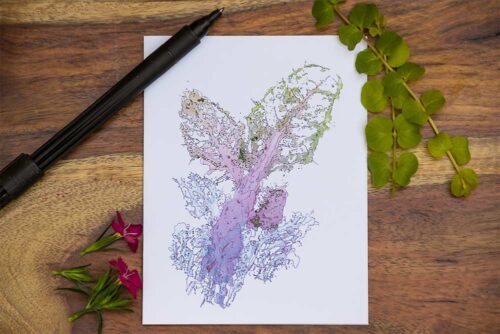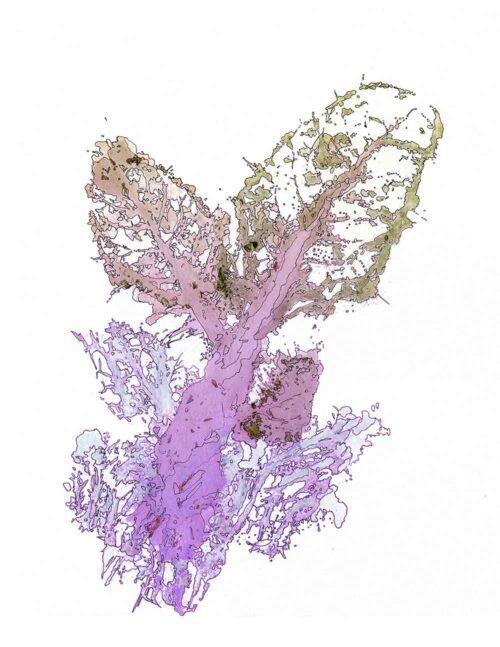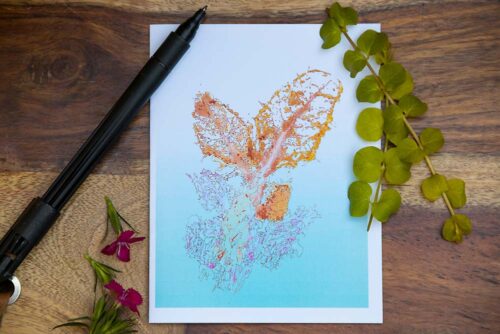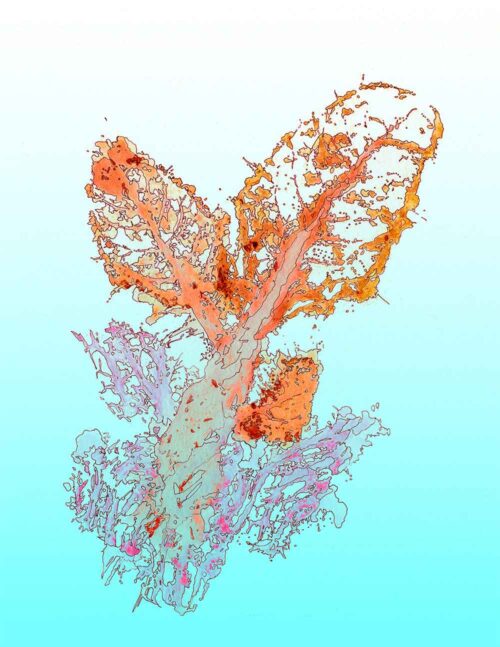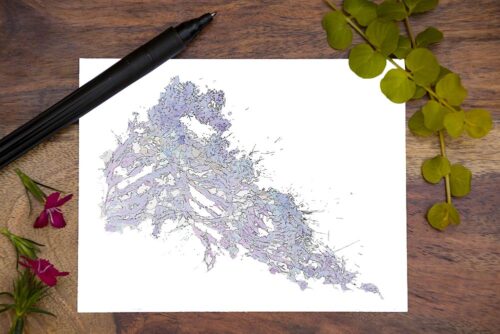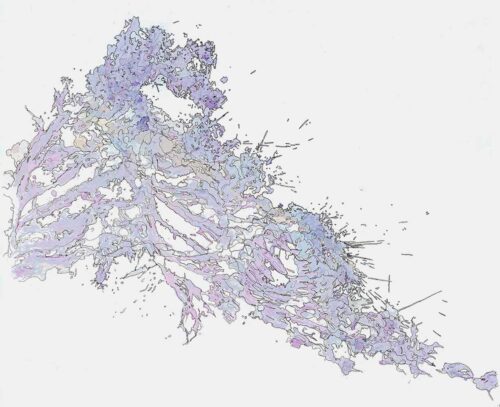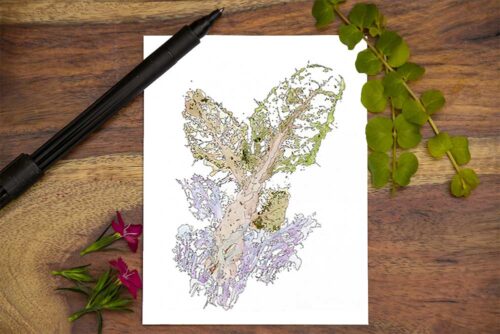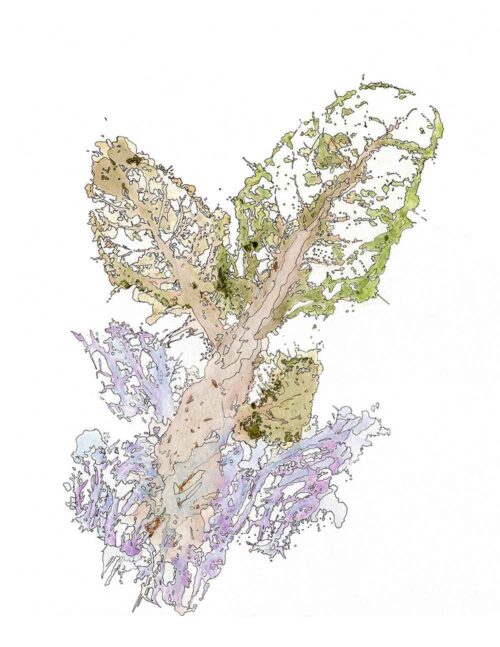-
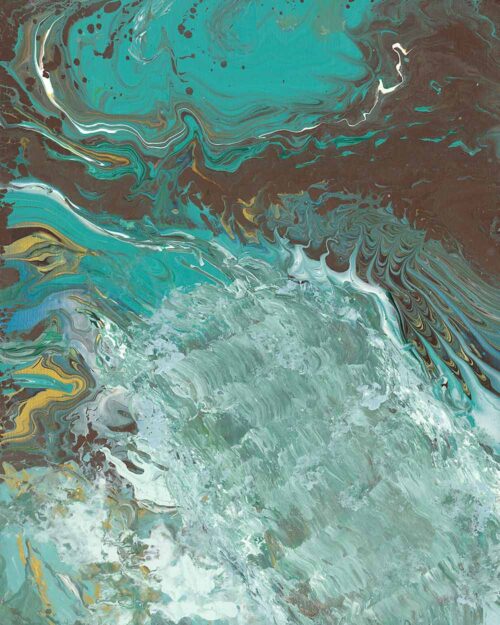 This is an original piece made using the acrylic pour technique. Acrylic paint colors of turquoise, gold, deep greens and blues, and white are puddled with a pouring medium over a cotton canvas. The mound of color is tilted and stretched across the canvas until various color cells develop as the paints shift and swirl. The final result appears to be a moving body of water cascading into a waterfall.
This is an original piece made using the acrylic pour technique. Acrylic paint colors of turquoise, gold, deep greens and blues, and white are puddled with a pouring medium over a cotton canvas. The mound of color is tilted and stretched across the canvas until various color cells develop as the paints shift and swirl. The final result appears to be a moving body of water cascading into a waterfall. -
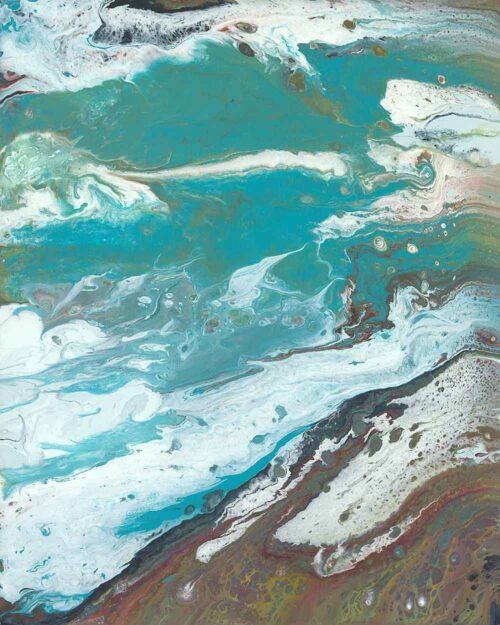 This is an original piece made using the acrylic pour technique. Acrylic paint colors of paynes grey, turquoise, white, burnt umber, blue, and viridian are puddled with a pouring medium onto a cotton canvas. The paint shifts as it is tilted and stretched across the canvas causing cells of various colors to form. A slight application of heat helps the cells emerge. The process continues until it develops into this seascape. It looks like the blustery swirls of the sea crashing along the rocky coast of Maine in the winter.
This is an original piece made using the acrylic pour technique. Acrylic paint colors of paynes grey, turquoise, white, burnt umber, blue, and viridian are puddled with a pouring medium onto a cotton canvas. The paint shifts as it is tilted and stretched across the canvas causing cells of various colors to form. A slight application of heat helps the cells emerge. The process continues until it develops into this seascape. It looks like the blustery swirls of the sea crashing along the rocky coast of Maine in the winter. -
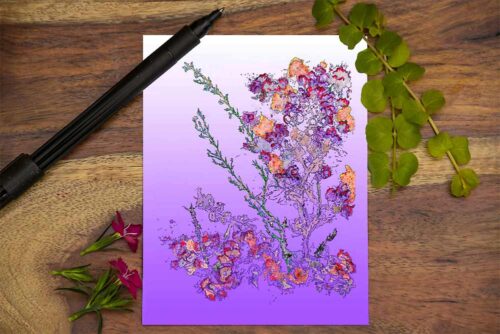
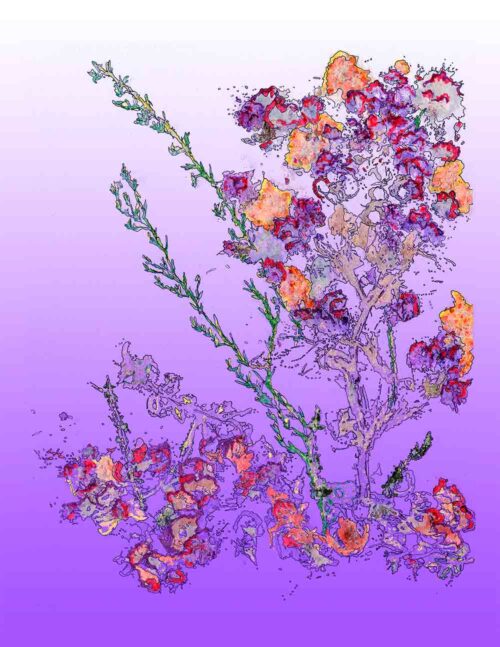 This piece is a very colorful version of a piece from the flower abrasion series. The original piece was made from smashed begonia and grass bits on watercolor paper. India ink and watercolor washes were applied and the piece was scanned. It was digitally enhanced, allowing us to see stalks of sea algae and coral sway underwater in the depth of the bluish purple sea.
This piece is a very colorful version of a piece from the flower abrasion series. The original piece was made from smashed begonia and grass bits on watercolor paper. India ink and watercolor washes were applied and the piece was scanned. It was digitally enhanced, allowing us to see stalks of sea algae and coral sway underwater in the depth of the bluish purple sea. -
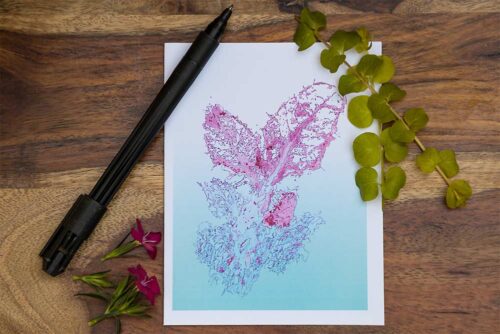
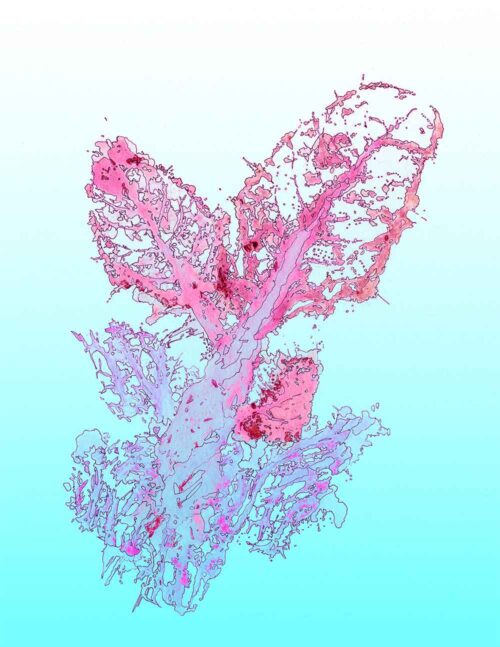 This is a digitally enhanced version of an original piece from the flower abrasion series. The original piece of smashed cabbage and chard was scanned then a blue fading background was added. The leaves changed to pink, and the bits of the original plan remnants dried on the page and created these red saturated areas.
This is a digitally enhanced version of an original piece from the flower abrasion series. The original piece of smashed cabbage and chard was scanned then a blue fading background was added. The leaves changed to pink, and the bits of the original plan remnants dried on the page and created these red saturated areas. -
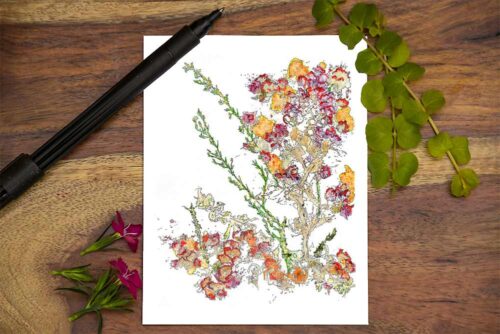
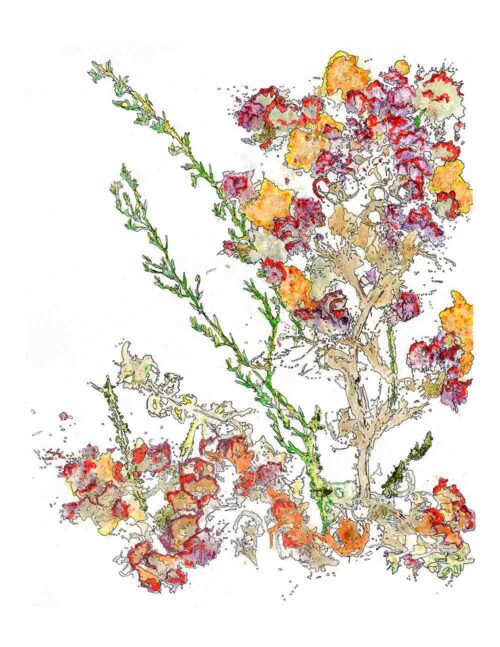 This is a lovely example of flower abrasion. It was created by smashing bits of begonia and grasses onto watercolor paper with a hammer. India ink found all the small bits of pigment that exploded outward as well as defined the plants themselves. Watercolor wash was used throughout the piece. It looks like a sea plant found along the shore as the tide recedes.
This is a lovely example of flower abrasion. It was created by smashing bits of begonia and grasses onto watercolor paper with a hammer. India ink found all the small bits of pigment that exploded outward as well as defined the plants themselves. Watercolor wash was used throughout the piece. It looks like a sea plant found along the shore as the tide recedes. -
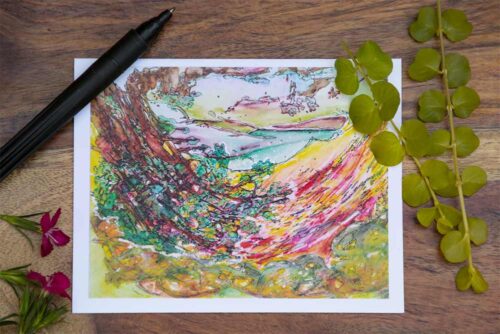
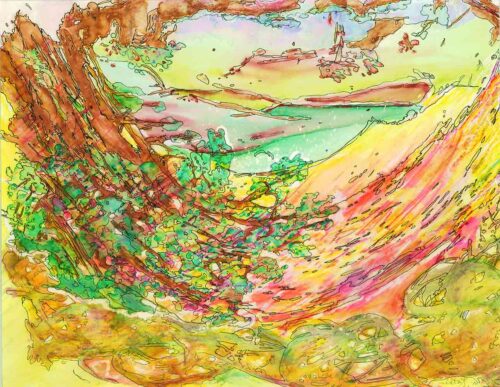 This piece was made with bits of wet abraded plants and flowers dragged across watercolor paper. Watercolor washes were applied as well as the use of India ink. A light spray of bleach provided an airy texture. It originally began as trees leaning into a rainbow, but it was suggested to turn it upside down as it resembles an idyllic scene near water.
This piece was made with bits of wet abraded plants and flowers dragged across watercolor paper. Watercolor washes were applied as well as the use of India ink. A light spray of bleach provided an airy texture. It originally began as trees leaning into a rainbow, but it was suggested to turn it upside down as it resembles an idyllic scene near water.
